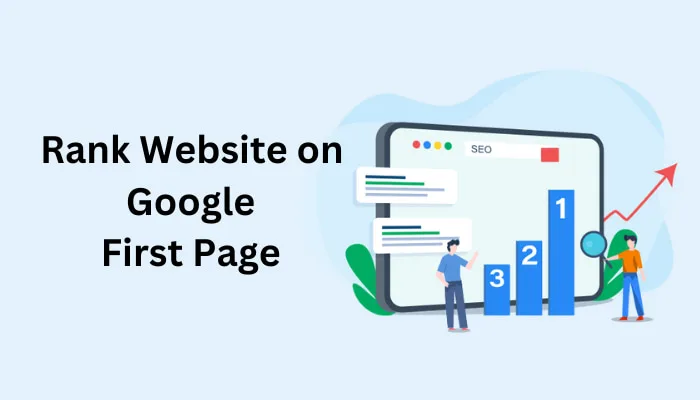When it comes to establishing a successful roofing business, an effective local SEO strategy can be game changer.
Now, you might wonder how your website can claim a top spot on the Search Engine Result Page (SERP) for local searches. It’s challenging, but doable through consistent efforts in Local search engine optimization.
This guide is designed to lead you through the fundamental strategies and techniques you need to optimize your roofing website for local SEO.
What is Local SEO
Local SEO is strategy to optimize your online presence for local searches. Now you might thinking what exactly local search is ?
Local search is actually when people search for product or service within a specific geographic location.
For example, when someone in New York city searching for roofing service . They might use a query like “Best roofers near me“
Importance of local SEO for roofing companies
With the rise of mobile and voice search, local SEO has become more important than ever.
This is especially important for businesses operating in a specific geographic location, as the majority of customers search for roofing services within their local area.
75% of Internet users never scroll past the first page of search results
When roofing companies optimize their service website for local search, can improve their chances of being found by potential customers.
Local SEO Factors
Ranking top on local search ranking depends on three fundamental factors :
- Relevance: This factor focuses on how well your website’s content matches what users are searching for. To improve relevance, use local roofing keywords related to your services and your area.
- Authority: Authority signifies your website’s credibility and reputation in the eyes of search engines.
Backlinks from authoritative local sources, like local directories and industry associations, can boost your authority in the roofing sector.
Positive online reviews and mentions on reputable websites also contribute to building authority. - Proximity: Proximity relates to how close your business is from the searcher’s location. Google considers the user’s location when displaying local search results.
To optimize for proximity, ensure your business’s NAP (Name, Address, Phone number) information is consistent across your website, local directories, and Google My Business.
Improve Local SEO for Roofing Companies
Follow these steps to improve local SEO for your roofing business :
Keyword Research
Conduct keyword research to identify the most relevant and high/low volume keywords related to roofing services in your local area.
Use tools like Google Keyword Planner or SEMrush to find popular keywords that potential customers might use when searching for roofing services.
Local Content Creation
Create high-quality, informative, and locally-focused content on your website’s blog. Write articles or guides that address common roofing issues or seasonal maintenance tips.
This helps establish your expertise and attracts local customers searching for roofing information.
Utilize On-page SEO techniques
Optimize your website’s on-page elements to improve its visibility in search engine results. This includes optimizing title tags, meta descriptions, headers, and content with your target keywords.
How to Optimize On-page Elements
To optimize your title tag, meta tag, and content for better search engine visibility, follow these steps:
![]() Title Tag Optimization:
Title Tag Optimization:

- Keep the title tag concise and relevant to the page’s content.
- Include the primary keyword near the beginning of the title tag.
- Limit the title tag length to around 50-60 characters.
- Make the title tag compelling to attract clicks from search engine users.
Example: Let’s say you have a webpage about healthy smoothie recipes. An optimized title tag could be “Delicious and Nutritious Healthy Smoothie Recipes | YourWebsiteName”.
![]() Meta Tag Optimization:
Meta Tag Optimization:

- Write a unique and descriptive meta description for each page.
- Include relevant keywords naturally within the meta description.
- Keep the meta description length between 150-160 characters.
- Make the meta description engaging to encourage users to click on your page.
Example: Continuing with the healthy smoothie recipes webpage, an optimized meta description could be “Discover a variety of delicious and nutrient-packed smoothie recipes that will boost your health and energy. Try our easy-to-follow recipes today!”
![]() Content Optimization:
Content Optimization:
- Conduct keyword research to identify relevant keywords for your content.
- Incorporate primary and secondary keywords naturally throughout the content.
- Ensure the content is well-structured with headings, subheadings, and paragraphs.
- Write high-quality, informative, and engaging content that provides value to readers.
Example: In the healthy smoothie recipes content, include keywords like “healthy smoothie recipes,” “nutritious smoothies,” “easy smoothie ideas,” etc. Provide step-by-step instructions, ingredient lists, and additional tips to make the content comprehensive and helpful.
![]() Heading Optimization:
Heading Optimization:
- Use descriptive and relevant headings that accurately summarize the content of the page.
- Incorporate target keywords naturally within the headings.
- Ensure a hierarchical structure by using H1 for the main title and H2, H3, etc., for subheadings.
Example: Suppose you have a blog post about “Top 10 Tips for Healthy Eating.” Your main heading (H1) could be “Top 10 Tips for Healthy Eating,” and subheadings (H2) could include “Tip 1: Incorporate Fresh Fruits and Vegetables” or “Tip 2: Drink Plenty of Water.”
![]() Image Alt Text Optimization:
Image Alt Text Optimization:

- Write descriptive alt text for each image that accurately describes the image’s content.
- Include relevant keywords when appropriate, but avoid keyword stuffing.
- Keep alt text concise and to the point.
Example: If you have an image of a person eating a salad, the alt text could be “Person enjoying a healthy salad.”
![]() URL Structure Optimization:
URL Structure Optimization:
- Create clean and readable URLs that reflect the content of the page.
- Use hyphens to separate words in the URL.
- Include relevant keywords in the URL.
Example: For a page about healthy recipes, a good URL structure could be “yourwebsite.com/healthy-recipes” or “yourwebsite.com/recipes/healthy.”
![]() Internal Linking Optimization:
Internal Linking Optimization:
- Include internal links within your content to connect related pages on your website.
- Use descriptive anchor text that clearly indicates the destination of the link.
- Ensure the linked pages are relevant and provide additional value to the user.
Example: In a blog post about healthy eating, you could include an internal link to another article on your website titled “The Benefits of Regular Exercise” with anchor text like “Learn more about the importance of exercise.
Technical SEO
Technical SEO for a roofing website involves optimizing its technical aspects.
Key areas to focus on :
- Website speed
- Mobile-friendliness
- URL structure
- XML sitemap
- robots.txt
- Canonicalization
- Structured data markup
- SSL certificate
- Internal linking
- And website analytics.
These optimizations, along with high-quality content and relevant keywords, can help improve search engine rankings.
Google My Business (Google Business Profile)
Create and optimize your Google My Business (GMB) listing. Provide accurate and up-to-date information about your roofing company, including your address, phone number, website URL, and business hours. Encourage customers to leave reviews on your GMB listing, as positive reviews can boost your local SEO.
How to Create and Optimize Google My Business
Sign in to your Google account: Go to google.com/business and sign in using your Google account. If you don’t have one, create a new account.
![]() Add your business information: Click on the “Manage now” button and enter your business name. If your business is already listed, claim it as yours. If not, click on “Add your business to Google.”
Add your business information: Click on the “Manage now” button and enter your business name. If your business is already listed, claim it as yours. If not, click on “Add your business to Google.”
![]() Enter your business details: Fill in the required information, including your business category, address, phone number, website, and operating hours. Make sure to provide accurate and up-to-date information.
Enter your business details: Fill in the required information, including your business category, address, phone number, website, and operating hours. Make sure to provide accurate and up-to-date information.
![]() Verify your business: Google will send you a verification code via mail or phone. Follow the instructions to verify your business. Verification is crucial to ensure your listing appears on Google Maps and search results.
Verify your business: Google will send you a verification code via mail or phone. Follow the instructions to verify your business. Verification is crucial to ensure your listing appears on Google Maps and search results.
![]() Add photos and videos: Upload high-quality images and videos that showcase your business. This can include your logo, interior and exterior photos, products, and team members. Visual content helps attract potential customers.
Add photos and videos: Upload high-quality images and videos that showcase your business. This can include your logo, interior and exterior photos, products, and team members. Visual content helps attract potential customers.
![]() Write a compelling business description: Craft a concise and engaging description of your business. Highlight your unique selling points, services, and any special offers. Use relevant keywords to improve your search visibility.
Write a compelling business description: Craft a concise and engaging description of your business. Highlight your unique selling points, services, and any special offers. Use relevant keywords to improve your search visibility.
![]() Manage customer reviews: Encourage customers to leave reviews on your Google My Business listing. Respond promptly to both positive and negative reviews to show that you value customer feedback. This helps build trust and credibility.
Manage customer reviews: Encourage customers to leave reviews on your Google My Business listing. Respond promptly to both positive and negative reviews to show that you value customer feedback. This helps build trust and credibility.
![]() Utilize Google Posts: Take advantage of Google Posts to share updates, promotions, events, or blog posts directly on your listing. This feature allows you to engage with potential customers and keep them informed.
Utilize Google Posts: Take advantage of Google Posts to share updates, promotions, events, or blog posts directly on your listing. This feature allows you to engage with potential customers and keep them informed.
![]() Monitor insights and analytics: Google My Business provides valuable insights about how customers find and interact with your listing. Monitor these metrics to understand your audience better and make data-driven decisions.
Monitor insights and analytics: Google My Business provides valuable insights about how customers find and interact with your listing. Monitor these metrics to understand your audience better and make data-driven decisions.
![]() Regularly update your listing: Keep your Google My Business listing up to date with any changes in your business, such as new products, services, or operating hours. Regular updates help to maintain accuracy and relevance
Regularly update your listing: Keep your Google My Business listing up to date with any changes in your business, such as new products, services, or operating hours. Regular updates help to maintain accuracy and relevance
Create location-specific website pages
This strategy involves creating pages that focus on the services that your company offer in specific areas. Use location-specific keywords throughout the website content.
Local Citations
Build local citations by listing your roofing company’s information on online directories, such as Yelp, Yellow Pages, and local business directories specific to your area. Ensure that your NAP (Name, Address, Phone number) details are consistent across all directories.
Online Reviews
Encourage satisfied customers to leave reviews on platforms like Google, Yelp, and Facebook. Positive reviews improve your reputation and contribute to higher local search rankings.
Suggestion: Respond to reviews, both positive and negative, to show that you value customer feedback.
Local Link Building
Build relationships with other local businesses, such as suppliers, contractors, or home improvement stores, and seek opportunities for link exchanges or guest blogging. Local backlinks from reputable websites can improve your local SEO.
Social Media Engagement
Engage with your local community on social media platforms like Facebook, Instagram, and Twitter. Share updates about your roofing projects, respond to customer inquiries, and participate in local conversations. Social media signals can indirectly impact your local search rankings.
By implementing the techniques outlined in this guide, roofing businesses can enhance their local search rankings, increase website traffic, and ultimately generate more leads and conversions.






